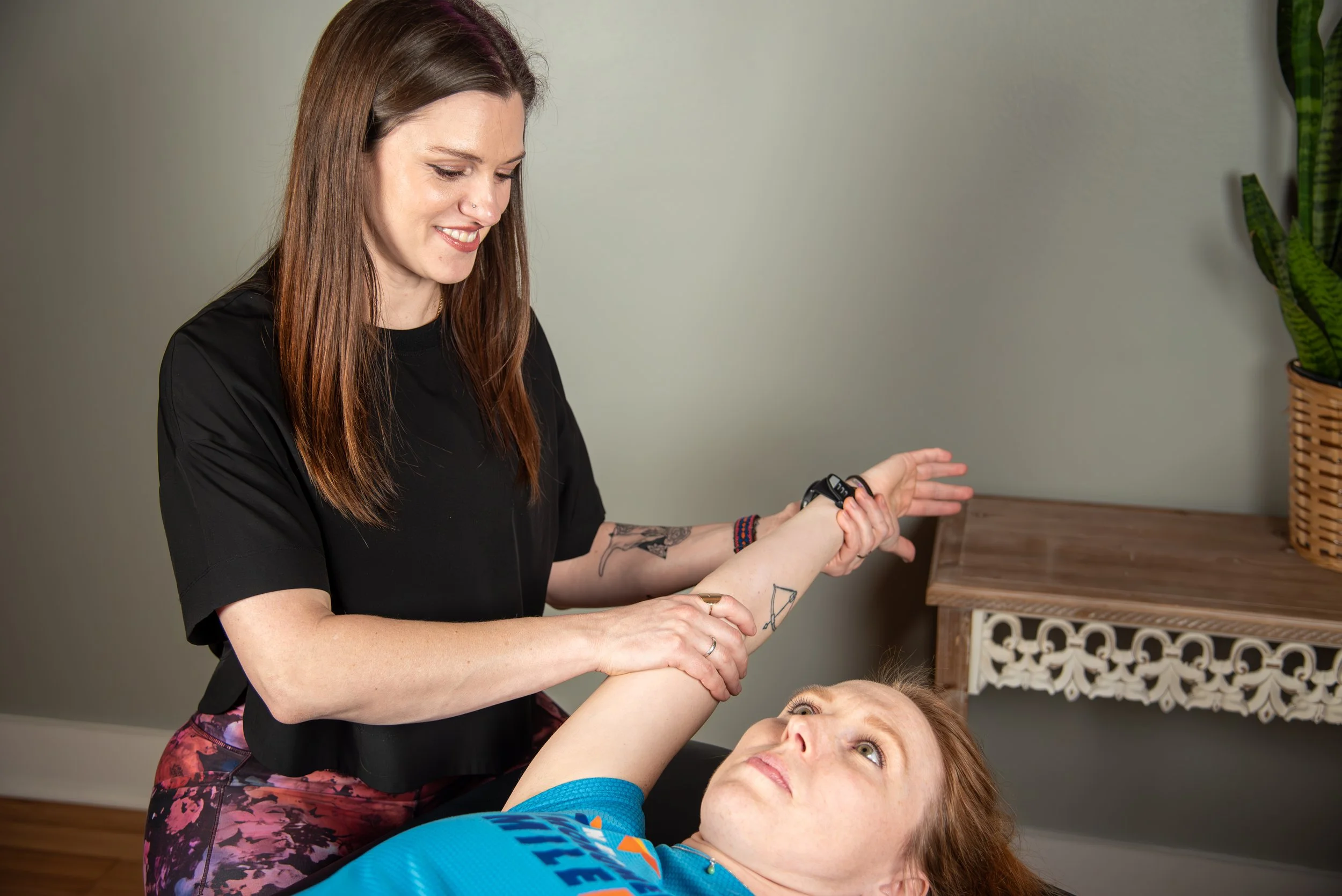Evidence-Based Recommendations for Treating Shoulder Impingement: A Physical Therapist's Perspective
Shoulder impingement syndrome is a common cause of shoulder pain and dysfunction, often affecting athletes, active individuals, and those with repetitive overhead activities. As a physical therapist specializing in orthopedics, I recognize the importance of evidence-based treatment approaches to effectively manage shoulder impingement and restore pain-free shoulder function. In this blog post, I'll share five evidence-based recommendations for treating shoulder impingement based on the latest research and clinical expertise.
Manual Therapy Techniques:
Physical Therapists utilize manual therapy techniques such as joint mobilizations, soft tissue mobilization, and myofascial release to address joint stiffness, muscle tightness, and restricted range of motion commonly associated with shoulder impingement.
Dry needling can be incredibly helpful for shoulder impingement syndrome. It is a highly skilled intervention that involves insertion of a monofilament needle into tight and tender muscles with the goal of restoring motion and expediting the healing process.
We work to target specific areas of restriction and tightness in the shoulder complex, including the glenohumeral joint, acromioclavicular joint, and surrounding soft tissues, to improve joint mobility and reduce impingement symptoms.
Shoulder Strengthening Exercises:
Physical Therapists prescribe targeted shoulder strengthening exercises to address muscular imbalances, weakness, and poor scapular control often seen in individuals with shoulder impingement.
We may focus on strengthening the rotator cuff muscles, particularly the supraspinatus, infraspinatus, and teres minor, to improve dynamic stability of the shoulder joint and reduce impingement risk during overhead activities.
We also incorporate exercises such as external rotation, scaption, prone horizontal abduction, and scapular stabilization exercises to address specific deficits and improve shoulder function.
Scapular Retraining:
Scapular retraining exercises can optimize scapular positioning and movement patterns, which play a crucial role in shoulder biomechanics and impingement prevention.
Proper scapular positioning and activation during functional movements such as overhead reaching, lifting, and throwing can reduce excessive stress on the rotator cuff tendons and subacromial structures.
Exercises such as scapular retraction, scapular protraction, scapular upward rotation, and scapular stabilization drills work to improve scapular control and neuromuscular coordination.
Activity Modification and Ergonomic Education:
PTs provide education on proper lifting techniques, posture, and ergonomic principles to minimize repetitive overhead activities and reduce strain on the shoulder joint.
We may encourage activity modification and avoidance of aggravating movements or positions that exacerbate impingement symptoms, such as prolonged overhead reaching, lifting heavy objects, or performing repetitive overhead exercises.
We work with clients to identify and modify daily activities or work-related tasks that may contribute to shoulder impingement, implementing strategies to optimize shoulder mechanics and reduce symptom recurrence.
Gradual Return-to-Activity Program:
Lastly, we develop a structured and progressive return-to-activity program tailored to the individual's functional goals, activity level, and specific demands of their sport or occupation.
We gradually reintroduce overhead activities, sports-specific movements, and functional tasks while monitoring for pain, weakness, or limitations in shoulder function.
We emphasize proper technique, pacing, and progression to ensure a safe and successful return to full activity, minimizing the risk of re-injury or symptom recurrence.
Effective management of shoulder impingement requires a comprehensive and individualized approach that addresses underlying biomechanical deficits, muscular imbalances, and functional limitations. By incorporating evidence-based treatment strategies into rehabilitation programs, physical therapists can help individuals with shoulder impingement achieve pain relief, improve shoulder function, and return to their desired level of activity. At Wildflower Physical Therapy & Wellness, we are committed to providing high-quality, evidence-based care to help individuals overcome shoulder impingement and optimize their shoulder health and performance.
If you are struggling with illness or injury and would like to get your body moving, schedule a physical therapy appointment with us today! At Wildflower Physical Therapy & Wellness, we can help you to get back to the life you want to live through pain management strategies, activity promotion and exercise. We offer both in-person and virtual evaluations. Our Cash Based Physical Therapy model allows us to deliver a highly individualized treatment plan without the fuss of insurance companies. Interested in trying dry needling to support your exercise routine and maximize recovery? Reach out to us today!

